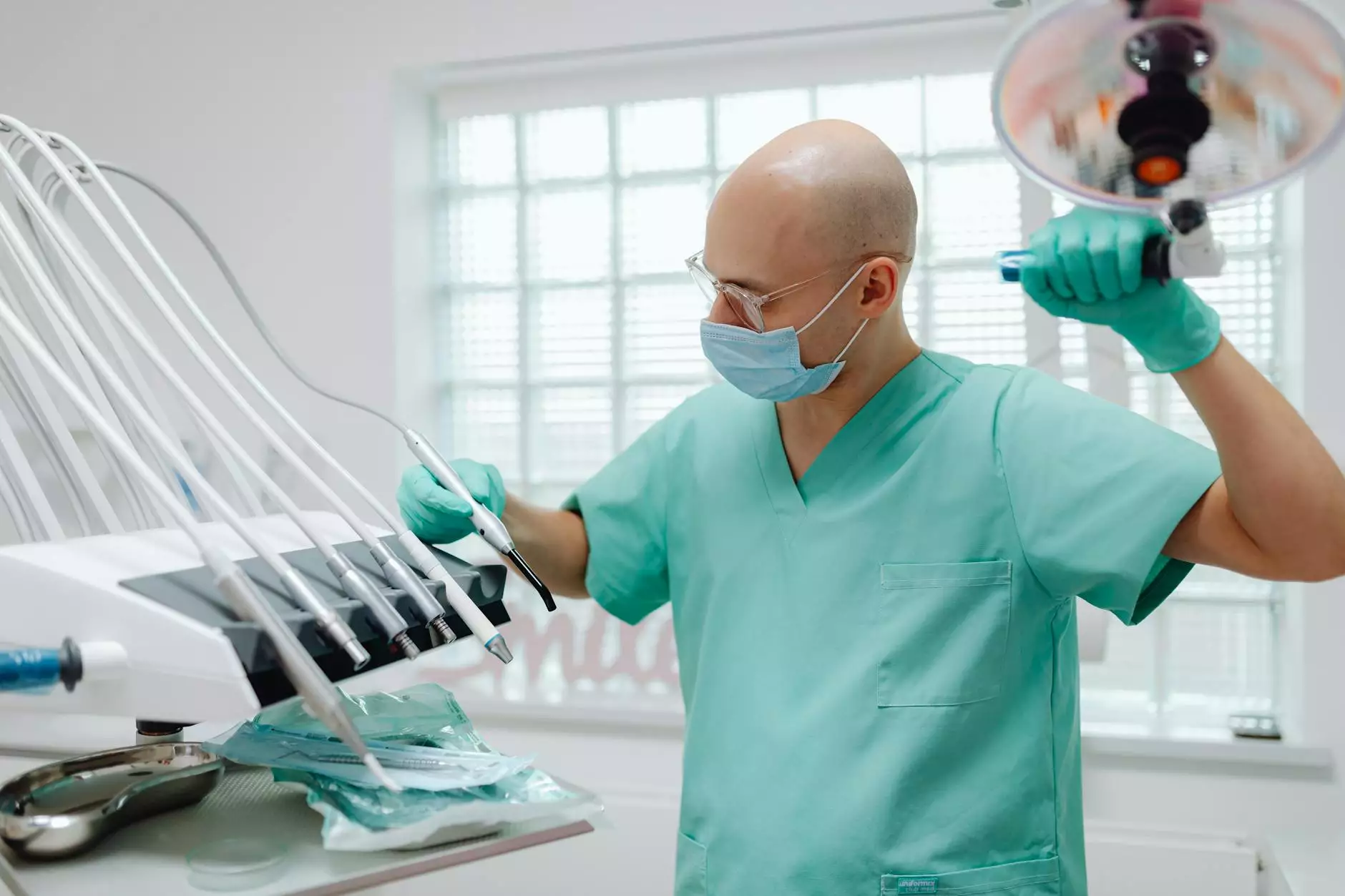Ultimate Guide to Cleaning Medical Instruments: Ensuring Safety, Efficiency, and Longevity in Healthcare

In the rapidly evolving healthcare landscape, maintaining impeccable hygiene and operational efficiency is paramount. The cornerstone of this commitment lies in the meticulous cleaning of medical instruments. Proper cleaning not only guarantees the safety of patients and staff but also extends the lifespan of vital medical equipment. In this comprehensive guide, we delve into the critical aspects of cleaning medical instruments, offering detailed insights, best practices, and expert tips to elevate your healthcare facility's standards.
Understanding the Importance of Properly Cleaning Medical Instruments
Cleaning medical instruments is the first and most fundamental step in infection prevention and control within healthcare settings. Dirty or inadequately sterilized instruments can harbor pathogens, leading to cross-contamination and healthcare-associated infections (HAIs). These infections can result in extended hospital stays, increased medical costs, and, most importantly, compromised patient safety.
Properly cleaned instruments ensure:
- Prevention of infections transmission among patients and staff
- Optimal functionality of medical devices
- Compliance with stringent health regulations and standards
- Longevity of medical tools and equipment
Key Principles of Effective Cleaning Medical Instruments
Implementing effective cleaning protocols involves understanding core principles that form the foundation of sterilization and disinfection success. These include:
- Pre-cleaning: Immediate removal of blood, bodily fluids, and debris after use
- Mechanical Cleaning: Use of appropriate tools and techniques to eliminate dirt and residues
- Chemical Cleaning: Application of suitable detergents and enzymatic cleaners
- Rinsing: Thorough removal of cleaning agents to prevent chemical residue
- Drying: Complete drying to prevent microbial growth and corrosion
- Validation: Regular checks and testing to ensure cleaning efficacy
Step-by-Step Process for Cleaning Medical Instruments
Understanding the nuanced steps in cleaning medical instruments is essential for healthcare providers. Here's a detailed process to ensure maximum cleanliness:
1. Immediate Pre-cleaning After Use
As soon as the instruments are used, they should be rinsed with sterile water or a moist cloth to prevent blood and fluids from drying and becoming harder to remove later. This step minimizes biofilm formation and facilitates subsequent cleaning.
2. Disassembly of Instruments
Carefully disassemble complex instruments to reach all internal parts. This allows for thorough cleaning and prevents residues from hiding in crevices.
3. Mechanical Cleaning with Appropriate Tools
Utilize ultrasonic cleaners, brushes, and washers designed for medical devices. Ultrasonic cleaning, in particular, effectively dislodges debris by cavitation, reaching into minute crevices and joints.
4. Application of Detergents and Enzymatic Cleaners
Use enzymatic cleaners that break down proteins, blood, and other organic materials. Select mild, non-abrasive detergents compatible with the instrument materials to prevent damage.
5. Rinsing and Drying
Thoroughly rinse instruments with sterile, distilled, or deionized water to wash away detergent residues. Follow with air-drying using filtered, lint-free cloths or dry in dedicated instrument dryers to prevent microbial contamination.
6. Inspection and Validation
Conduct visual inspections and utilize test strips or biological indicators to verify the cleanliness. Instruments should be chloride-free, spotless, and free of any organic or inorganic residues before sterilization.
Best Practices for Cleaning Medical Instruments
Adhering to industry best practices enhances cleaning efficacy and safety. Here are some essential guidelines:
- Use correctly labeled and stored cleaning agents suited to specific instrument types.
- Implement standardized protocols across all personnel handling instruments.
- Train staff regularly on proper cleaning techniques and safety measures.
- Maintain routine equipment calibration and maintenance of ultrasonic cleaners, washers, and sterilizers.
- Document cleaning processes meticulously for compliance and quality assurance.
- Prioritize safety equipment such as gloves, masks, and eye protection during cleaning procedures.
Choosing the Right Equipment and Supplies for Cleaning Medical Instruments
Investing in high-quality, reliable cleaning equipment is crucial. Some recommended tools include:
- Ultrasonic Cleaners: For high-efficiency removal of debris from complex instruments
- Instrument Washers/Disinfectors: Automated systems that combine cleaning and disinfection functions
- Drying Stations: Moisture-free environments to prevent microbial growth
- Sterilization Accessories: Proper racks, cassettes, and indicators to monitor sterilization efficacy
Moreover, selecting top-grade cleaning solutions tailored for medical applications is vital. These include enzymatic detergents, alkaline cleaners, and rinsing agents that are compatible with the materials of your instruments.
Regulatory Standards and Compliance in Cleaning Medical Instruments
Global and local health authorities, such as the CDC, WHO, and OSHA, set stringent standards for instrument cleaning and sterilization. Adherence to these guidelines ensures:
- Patient safety and high-quality care
- Legal compliance and accreditation adherence
- Minimized risk of HAIs
Regular staff training, validation testing, and detailed record-keeping are essential components of sustainable compliance programs. Incorporate quality assurance measures, such as biological and chemical monitoring, into daily routines to verify cleaning success.
Common Challenges in Cleaning Medical Instruments and How to Overcome Them
Despite best efforts, challenges persist. Here are some typical issues and solutions:
- Residual debris or biofilm: Use ultrasonic cleaning and enzymatic detergents for deep cleaning.
- Corrosion and damage to instruments: Use gentle, compatible cleaning agents and avoid abrasive materials.
- Inconsistent cleaning results: Standardize protocols and provide ongoing staff training.
- Equipment malfunction or improper sterilization: Regular maintenance and calibration of cleaning tools.
Innovations and Future Trends in Cleaning Medical Instruments
Emerging technologies are revolutionizing the way healthcare facilities approach instrument cleaning, including:
- Automation and robotics: Fully automated cleaning and sterilization systems with real-time monitoring
- Advances in cleaning agents: Eco-friendly, highly effective detergents with rapid action
- Nanotechnology: Coatings that resist biofilm formation and facilitate cleaning
- Smart equipment: Internet-connected devices providing data analytics and maintenance alerts
Conclusion: Elevate Your Healthcare Facility’s Standards with the Right Approach to Cleaning Medical Instruments
Ensuring the cleaning of medical instruments is more than routine maintenance; it is a vital component of patient safety, operational efficiency, and regulatory compliance. By adopting best practices, investing in quality equipment, and staying abreast of technological advancements, healthcare providers can significantly reduce risks and improve outcomes.
At MedKalan, we specialize in providing premium Medical Supplies tailored to support your cleaning and sterilization needs. Our comprehensive range of cleaning solutions and equipment, coupled with expert guidance, empowers your facility to achieve excellence in healthcare delivery.
Remember, clean instruments save lives. Prioritize thorough cleaning today to build a safer, healthier tomorrow.




